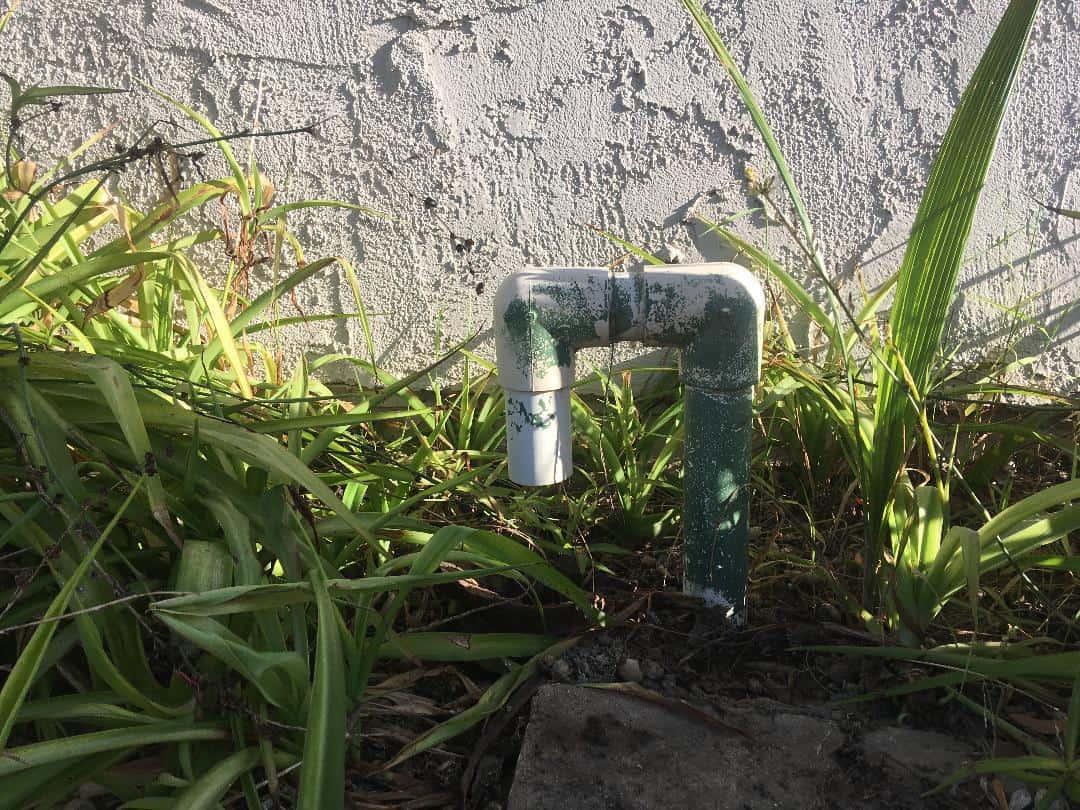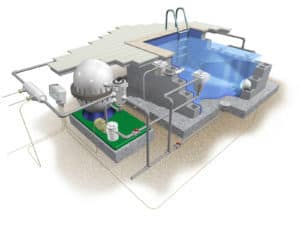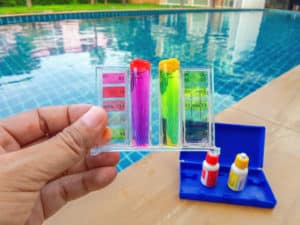In Orange County, California we get mildly warm to hot weather in the summer usually from highs of 77 to 82 degrees near the coast to 100 degrees plus in the more inland hot spots. We estimate around 1 inch to 2 inch of water evaporation per week in the summer and depending on if your near the coast or in a hotspot. You will have less evaporation in the winter and may need pool leak detection if you are losing around 1 inch to 2 inches per week in the winter or more than 1.5 inches to 3 inches per week in the summer.
Lets start this article with how to measure how much water you are losing. The easy way is to fill your pool up enough to accommadate a week or two of evaporation usually around 3/4 of the way up the tile. Then mark the water level line inside the skimmer or on a tile with a black crayon. Wait 7 days and measure the difference between your crayon mark and the 7 day old water line. This is the amount of water loss you have in 1 week. Now review the first paragraph and consider if you need pool leak detection.
The Bucket Test Lets You Know if You May Need Pool Leak Detection!
You can also use the the bucket test. This test will show you normal water loss from evaporation (water loss inside bucket) and water loss in swimming pool. If you have a small leak, you may need to allow 7 days for convincing differentiation between the two measurements.
Once determined that you have a leak and may need pool leak detection, you need to observe all visible areas that could be leaking. You do not want to pay for leak detection to come out and tell you that your backwash valve is leaking out your p trap. Here is a list of common spots for swimming pool leaks and we will dissect them one by one:
Equipment and Plumbing
Visually inspect under and around all of your pool equipment and plumbing for visible leaks. Usually pretty obvious.
Filter Backwash Valve and Backwash line Out P Trap To Sewer
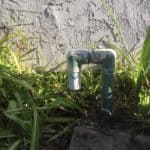 Visually inspect the pipe that backwash water flows out of into house sewer or wherever it spills while the pool system is on. A bad backwash valve can leak water out backwash line into the p trap in the picture. These p traps may not be easily seen or found, so are easy to forget about.
Visually inspect the pipe that backwash water flows out of into house sewer or wherever it spills while the pool system is on. A bad backwash valve can leak water out backwash line into the p trap in the picture. These p traps may not be easily seen or found, so are easy to forget about.
Tile and Pool Surface
Visually inspect all of your pool tile and pool surface for cracking, holes, and stress. Big cracks can allow for an underground pool leak.
Skimmer
Visually inspect inside your pool suction skimmer. This is the part of the pool where the pump sucks the water at the top of the water line. Usually has a rectangle opening in the tile line about 8″ to 1.5′. Lift up the skimmer lid and inspect the plastic of the skimmer box. look for cracks, holes, and stress marks. Check the joint between the front of the skimmer box and the wall of the pool. There is usually a plaster band that fills in this joint. Look for cracks and holes. This is the part usually looked at as the source if pool leak detection cant find a pressurized leak.
Hydrostatic valve
The hydrostatic valve looks like the main drain in the deep end of the pool. The purpose of it is to allow hydrostatic pressure (ground water pushing up bottom of pool shell) through this valve, so the pressure does not pop the pool up out of the ground when the pool is empty of water.
Light Fixture Niche and Conduit
It is hard to inspect and find an underground pool leak in the light fixture and conduit, but underground leak detection companies can plug up the conduit hole to test.
Toilet Bobber Auto-fill and Automatic Drains
One problem with the in line, deck mounted toilet bobber auto-fills is they will constantly keep the water line at a certain point which means you may not even realize that you have an underground pool leak. It is not a bad idea to turn this auto-fill off for a couple weeks every 6 months just to make sure you do not have a leak. This can be especially complicated with an automatic drain. This situation causes water loss with water replacement without notice until the water company calls or notifies you or you visibly notice damp areas in your ground.
These toilet bobber auto-fills can fail in an on position, so they get stuck and fill the swimming pool continuously until the swimming pool overflows. Not a fan of these convenient, but potentially wasteful and damaging auto-fills.
If after checking these areas of potential water loss, you still think you have an underground water leak, it is time to call a pool leak detection company like Orange County Leak Services.
Pool Leak Detection is Alot of Work!
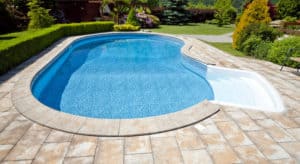 You can expect to pay roughly $450 at this time for pool leak detection to come in and test all of your plumbing lines and detect the location of your leak(s). Once they find it, they will usually provide a bid to repair the leak which will add to the costs as this could imply cutting concrete and major excavation. An underground pool leak is never fun, but it happens.
You can expect to pay roughly $450 at this time for pool leak detection to come in and test all of your plumbing lines and detect the location of your leak(s). Once they find it, they will usually provide a bid to repair the leak which will add to the costs as this could imply cutting concrete and major excavation. An underground pool leak is never fun, but it happens.
We hope this article helps you form a plan if you have an underground pool leak. Having a sound swimming pool that holds water perfectly is a major part of your Pool Heaven!
If you need help with any pool or spa projects in Orange County, Ca., provide us your information and we will respond with more info. and a free estimate or if we don’t provide the service, we will have the pool professional we use and trust contact you .
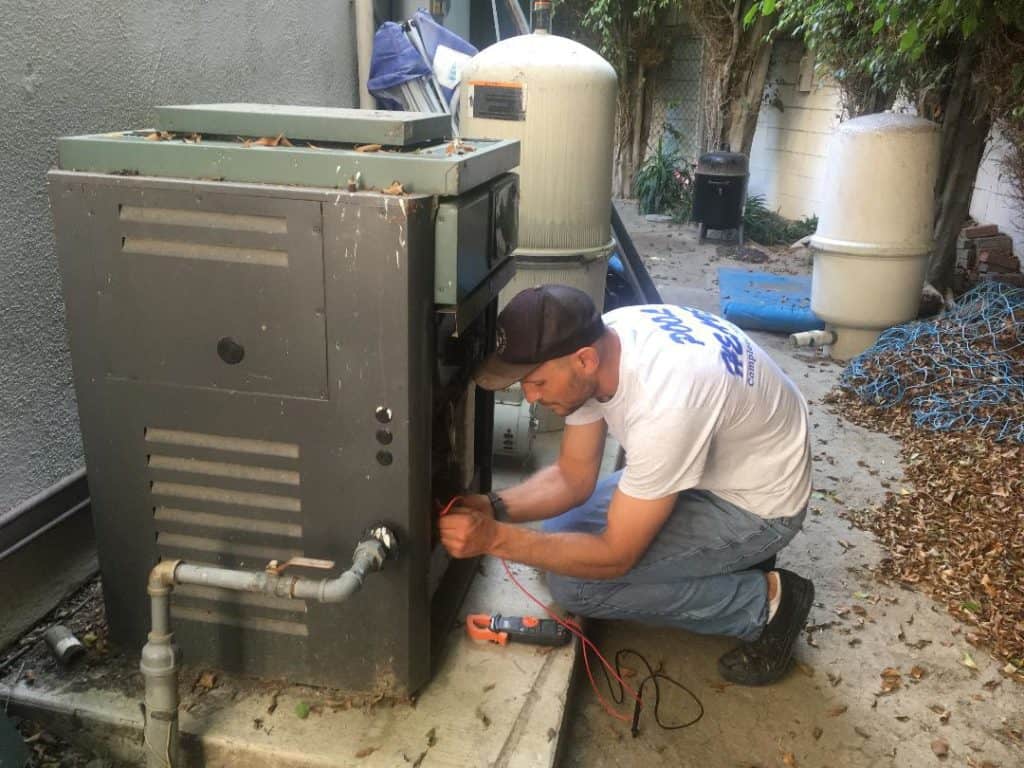
Check out one of these informative articles below or type in any swimming pool or spa related topic and click search.

Best Hayward Navigator Pool Cleaner Maintenance in Newport Beach Ca.
We are heading into October and the Santa Ana winds will be here soon, so this is a perfect time for Hayward Navigator pool cleaner
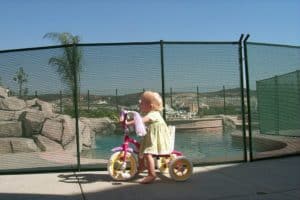
Child Drowning Prevention Saves Lives in Huntington Beach
If you own a pool or spa, this is one article you need to read and re-read every year. This tragedy is ageless. It can

How to Hire Expert Newport Beach Swimming Pool Service
You want to know that your Newport Beach swimming pool service is legal, insured, experienced, and easy to communicate with. Let me start by saying

What is the role of Chlorine in pool water?
Water Chemistry Share Chlorine is a crucial element in maintaining properly balanced pool water. It is used as a disinfectant to kill harmful bacteria, viruses,

